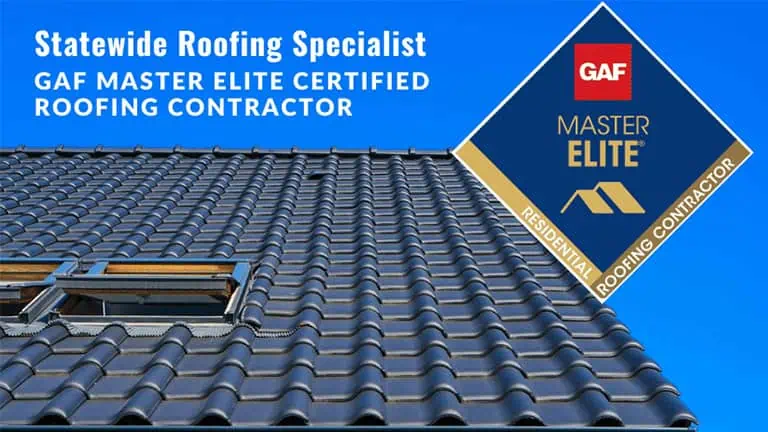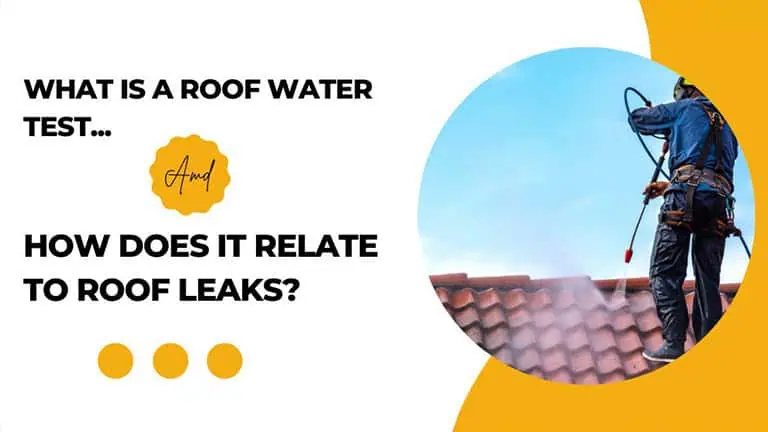
Does My Roof Need Ventilation?
The roof over your head is one of the most important aspects of a safe and comfortable home. It protects us from the rain and shields us from harsh sunlight. But did you know that your roof needs to breathe?
It’s true! Proper roof ventilation can do wonders for the longevity and effectiveness of your roof. Whether it’s ensuring your attic stays cool during the summer or maintaining reasonable energy costs in the winter, roof ventilation makes a difference.
In today’s blog, we’ll explore roof ventilation and how it can increase the life of your roof, reduce roof repairs, and save you money over time. Stick around to learn all about roof ventilation and why it’s such an integral part of a properly functioning home.
What is Adequate Roof or Attic Ventilation?
So, what exactly is adequate roofing ventilation? How does one know that they’re following the industry’s best practices? After all, there’s not exactly a one-size-fits-all solution, and well-maintained ventilation can greatly impact your roof’s lifespan, energy costs, and overall comfort.
Different homes have varying ventilation needs, and it will likely take the expertise of roofing contractors to determine the appropriate strategies. One such method includes balancing the intake and exhaust vents along your roof. Properly spaced vents can allow air to flow easily and hotter air to escape, keeping your attic– and your home cool as a result.
You’ll also need to consider your attic space, your area’s climate, and the type of insulation your home has. Each of these factors will affect your roof’s capabilities and how well it handles the environment.
What Adequate Roof Ventilation Can Do for Your Home
While it might seem like a fairly not important aspect of your home, adequate roof ventilation is crucial to your family’s health and the lifespan of your structure. Let’s look at just a few of the benefits having a properly ventilated roof can do for you:
1. Prevents Moisture Buildup
One of the primary functions of roof ventilation is to prevent moisture buildup in your attic. Without adequate ventilation, warm and humid air from your home can become trapped in the attic space. Over time, this trapped moisture can lead to mold growth, wood rot, and even compromise the structural integrity of your roof. Excess moisture can also create ideal conditions for developing ice dams during the winter months, which can damage your roof and lead to leaks.
2. Extends the Life of Your Roof
A well-ventilated attic helps regulate the temperature of your roofing system. By allowing hot air to escape and cooler air to enter, your roof is better equipped to handle the stresses of fluctuating temperatures. This, in turn, can significantly extend the life of your roof, reducing the need for frequent and costly roof repairs.
3. Reduces Energy Costs
Proper roof ventilation doesn’t just benefit your roof; it can also lead to substantial savings on your energy bills. In the summer, a well-ventilated attic helps prevent excess heat from building up, reducing the strain on your air conditioning system. During the winter, it helps maintain a consistent temperature, preventing heat loss and reducing your heating costs. This energy-efficient solution can have a positive impact on your monthly budget.
4. Improves Indoor Air Quality
Good indoor air quality is essential for your family’s health and comfort. Adequate roof ventilation can play a role in achieving this by expelling stale and polluted air from your home. This is especially important if your home has poor ventilation in other areas. By promoting the circulation of fresh air through your attic, you can ensure that the air your family breathes is clean and healthy.

Common Types of Roof Vents for Homes
Now that we’ve explored what constitutes adequate roofing ventilation, and how it can help your home, let’s look at some common types of roof vents on the market:
1. Wind Turbine Vents
Wind turbine vents are passive vents that use wind power to draw warm, moist air out of the attic, creating a natural airflow. Wind turbine vents are effective for windy areas and are cost-effective, as they don’t require electricity or any mechanical components.
2. Powered Roof Attic Fans
Powered attic fans are electrically driven and provide active ventilation, quickly removing hot air from the attic during the warmer months and reducing the load on your cooling system. However, they do consume electricity and may require professional installation by professional roofers in Greenville.
3. Box Roof Vents
Box roof vents are another passive ventilation option. They’re simple and cost-effective but should be strategically placed to ensure proper airflow. These vents are often square or rectangular in shape and can be installed on the roof’s surface, offering an unobtrusive appearance.
4. Ridge Vents
Ridge vents are installed along the peak or ridge of your roof, providing a continuous ventilation point. They allow hot air to escape while preventing rain and snow from entering the attic and are a popular choice for their efficiency and aesthetic appeal, as they blend seamlessly with the roofline.
5. Soffit Vents
Soffit vents are installed along the underside of the eaves or soffits. They work in conjunction with other roof vents, allowing cool air to enter the attic while warm air exits through other vents. Soffit vents are an essential part of a balanced ventilation system.
6. Gable Vents
Gable vents are installed in the gable ends of a house, allowing for effective cross-ventilation and easy temperature management.
7. Solar-Powered Vents
Solar-powered roof vents are an energy-efficient option that uses solar panels to power ventilation fans to keep your attic space cool. It’s a great choice for environmentally-conscious homeowners who are looking to keep their homes cool while minimizing their carbon footprint.
Signs That a Home May Have a Ventilation Problem
So, what are the hallmarks of a home that has improper ventilation? Let’s dive into a few of the biggest symptoms:
1. Excessive Heat
One of the most noticeable signs of poor roof ventilation is excessive heat in your attic and home. Inadequate ventilation allows hot air to become trapped in the attic, creating an oven-like effect that can make your home unbearably hot, especially during the summer. If your home feels sweltering, it might be time to investigate your roof ventilation.
2. Excess Moisture Buildup
Moisture problems in your attic are a clear indication of roof ventilation issues. Without proper airflow, moisture can accumulate, leading to mold growth, wood rot, and other structural damage. If you notice dampness, water stains, or condensation in your attic, it’s a red flag that your roof ventilation needs attention.
3. Ice Dams in Winter
Winter can bring its own set of challenges, and one of them is ice dams. Ice dams form when warm air from your home rises into the attic, melting the snow on your roof. The melted snow then refreezes at the eaves, creating ice dams that can damage your roof and cause leaks. This issue is often a result of poor roof ventilation that allows warm air to accumulate in the attic. To prevent ice dams, you’ll need to address your ventilation problem.
4. High Energy Bills
If your attic is too hot in the summer and too cold in the winter due to improper ventilation, your HVAC system has to work harder to maintain a comfortable temperature in your home. As a result, your energy bills can skyrocket. If you notice a significant increase in energy costs, it’s a good idea to have your roof ventilation system inspected and repaired by roofing contractors or roof repair specialists.
Count on Statewide Roofing Specialist for All Your Roofing Needs
Whether you’re looking for simple roof repairs or in need of a full roof replacement, Statewide Roofing Specialist has the skills and eye for quality to keep your home safe, dry, and comfortable in any season.
We’re a fully licensed and certified roofing company and more than ready to tackle your biggest roofing woes. Roof ventilation issues? We can handle it. Shingle repairs or flashing problems? We’ve got you covered.
It doesn’t matter whether you need residential roofing answers or help with a commercial structure; our staff can provide efficient solutions that won’t break the bank in the process.
So, what are you waiting for? Don’t let your damaged roof put you out in the rain. Call Statewide today at (336) 936-5711 and let our team of roofing experts help you!


